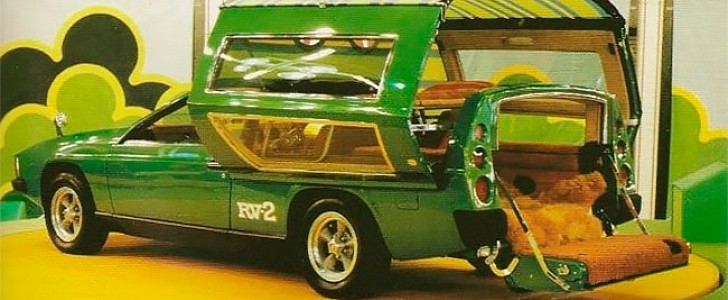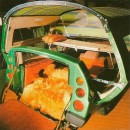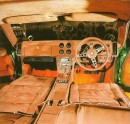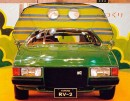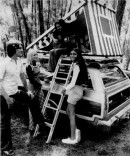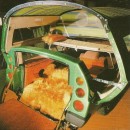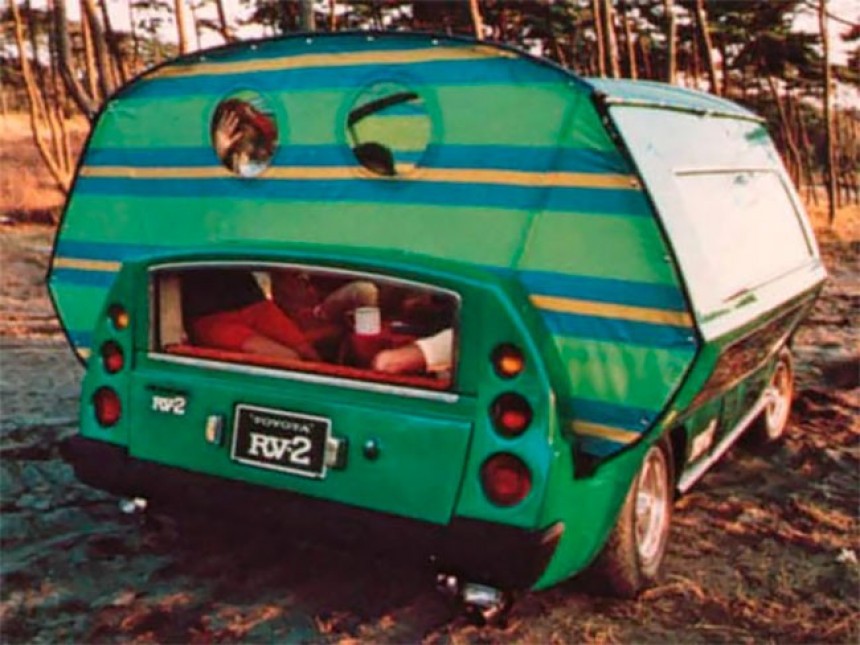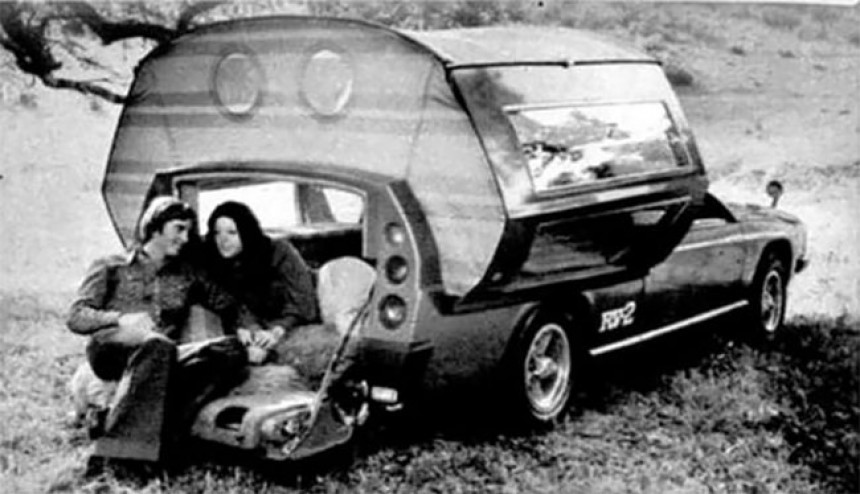The ‘70s “Me Decade” was a weird time, often tumultuous and troubled, and particularly striking and different from a stylistic standpoint. The ‘70s were also the decade when Toyota tried to make a camper wagon happen, and it was as gloriously hippie as anything that ever came out during that era.
This is an ode to the Toyota RV-2, the wagon camper that was as ridiculous as it was awesome and which, most importantly, predicted current trends for recreational vehicles. The RV-2 was vanlife condensed before the influencers of our time were even born: the everyday car you could also take for a spin into the wilderness. Sadly, the RV-2 was also the camper that came thisclose to happening but never did.
In 1972, at the Tokyo Auto Show, Toyota unveiled what it called an “idea car.” The RV-2 was a shooting-brake, but it was also a camper that could, according to the company, feed and sleep four adults. Granted, all these four adults had to know each other very well to share sleeping and living accommodations in the cramped space at the back of a wagon, but those were the ‘70s: it was a given almost.
The timing of the presentation also coincided with the last throes of station wagons as a popular car, though Toyota could have no idea of what was about to happen. When designers started working on the RV-2, station wagons were still the preferred family car, though they’d lost some of the prestige associated with them earlier on.
The RV-2 took some of the ideas highlighted in the Celica-based RV-1, introduced just one year prior, and expanded on them to turn the entire vehicle into a camper. The base for the RV-2 was either a Mark II or a Crown; Toyota never expanded on the project to reveal specifics, despite the fact that marketing plans were underway for it even before it was unveiled. The wheelbase was 107.6 inches (273 cm), with the RV-2 measuring 186.2 inches (473 cm) in length, 70.4 inches wide (179 cm), and 52.4 inches (133 cm) high.
The RV-2 was a two-door vehicle powered by a 2.6-liter 6-cylinder engine delivering 130bhp and mated with a five-speed manual transmission. The top speed was said to be 118 mph (190 kph), though clearly, this was a vehicle best enjoyed when not moving.
The rear end was made of two clamshell sections that connected at the roof without additional support and spectacularly opened up halfway on hinges below waist level. When open, the RV-2 could be fit with striped tent fabric with portholes, which turned the entire rear into the camper. In excellent weather, the camper could be used without the tent fabric for an alfresco experience like no other.
Inside, the RV-2 was pure ‘70s vibe, with everything covered either in shag carpet or plush. The rear section was the master bed, which was also the floor when you sat on the sides that doubled as benches. Two more adults could sleep on the front seats, which reclined all the way back. In some marketing materials circulated with dealers in the U.S., the wagon was shown with a fifth berth suspended in the middle or with a pop-up tent on top when the clamshell doors were closed. The idea, we assume, was to highlight its versatility.
After the Tokyo Show, the RV-2 went on a tour in the U.S., including stops in New York and Los Angeles. The reception was warm, and several industry outlets got to test and review the right-hand-drive prototype, the only one ever built. Somewhat hilariously, so did adult magazine Penthouse in August 1973, and the conclusion was that this was “the perfect recreational vehicle – a fast, comfortable car and a handy little camper.” The spread accompanying the review was predictable – and perhaps the raciest Toyota “ad” ever.
As you probably guessed already, despite claims that this camper could feed and sleep four adults, there were exactly zero facilities for the former. Official brochures vaguely mentioned picnic furniture that could be carried inside the camper during transportation and then taken out, and there was also the bench in the shag-carpet-lined tailgate that provided a comfy seat to take in the wonders of Mother Nature. But as far as actual food preparation goes, there was none of it inside.
That wasn’t what killed the RV-2 in the bud, though; the oil crisis probably did, as it spelled the decrease in popularity of station wagons. Or maybe Toyota deemed the project unprofitable, despite the enthusiastic welcome.
Regardless, the Toyota RV-2 predicted with almost eerie prescience the later popularity of campers. Today, we’re seeing a boom in recreational vehicles, with those that combine multiple functionality and ease of use being the most popular. Ditch the shag carpet and the striped tent, and add a bit more practical features, and the Toyota RV-2 would, indeed, be the perfect recreational vehicle, the kind you take with you on an impromptu outing with your loved one(s). Come to think of it, you could keep the fuzzy carpet because it’s back in fashion.
In 1972, at the Tokyo Auto Show, Toyota unveiled what it called an “idea car.” The RV-2 was a shooting-brake, but it was also a camper that could, according to the company, feed and sleep four adults. Granted, all these four adults had to know each other very well to share sleeping and living accommodations in the cramped space at the back of a wagon, but those were the ‘70s: it was a given almost.
The timing of the presentation also coincided with the last throes of station wagons as a popular car, though Toyota could have no idea of what was about to happen. When designers started working on the RV-2, station wagons were still the preferred family car, though they’d lost some of the prestige associated with them earlier on.
The RV-2 was a two-door vehicle powered by a 2.6-liter 6-cylinder engine delivering 130bhp and mated with a five-speed manual transmission. The top speed was said to be 118 mph (190 kph), though clearly, this was a vehicle best enjoyed when not moving.
The rear end was made of two clamshell sections that connected at the roof without additional support and spectacularly opened up halfway on hinges below waist level. When open, the RV-2 could be fit with striped tent fabric with portholes, which turned the entire rear into the camper. In excellent weather, the camper could be used without the tent fabric for an alfresco experience like no other.
Inside, the RV-2 was pure ‘70s vibe, with everything covered either in shag carpet or plush. The rear section was the master bed, which was also the floor when you sat on the sides that doubled as benches. Two more adults could sleep on the front seats, which reclined all the way back. In some marketing materials circulated with dealers in the U.S., the wagon was shown with a fifth berth suspended in the middle or with a pop-up tent on top when the clamshell doors were closed. The idea, we assume, was to highlight its versatility.
As you probably guessed already, despite claims that this camper could feed and sleep four adults, there were exactly zero facilities for the former. Official brochures vaguely mentioned picnic furniture that could be carried inside the camper during transportation and then taken out, and there was also the bench in the shag-carpet-lined tailgate that provided a comfy seat to take in the wonders of Mother Nature. But as far as actual food preparation goes, there was none of it inside.
That wasn’t what killed the RV-2 in the bud, though; the oil crisis probably did, as it spelled the decrease in popularity of station wagons. Or maybe Toyota deemed the project unprofitable, despite the enthusiastic welcome.
